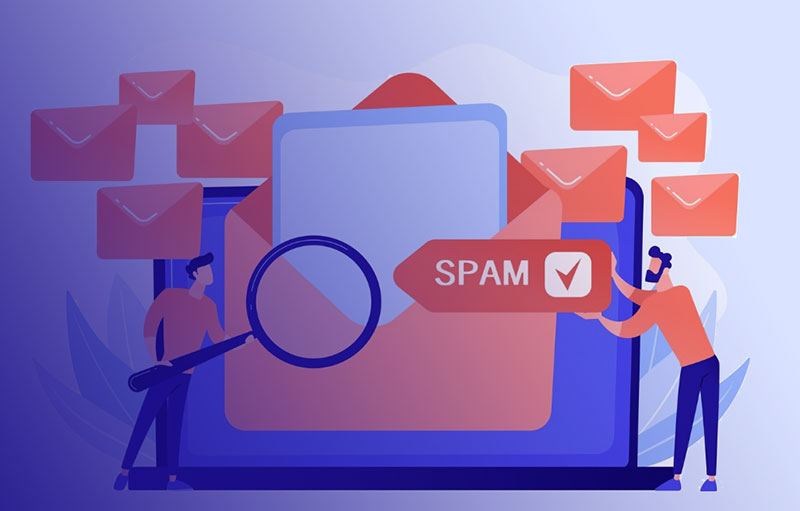In today’s digital age, emails serve as a crucial means of communication for businesses and individuals alike. However, a common issue that many face is emails ending up in the recipient’s spam folder instead of their inbox. This can be particularly problematic for businesses relying on email marketing or important correspondence. If you’re experiencing Emails Going to Spam on your cPanel hosting, fear not! Below, we’ll explore why emails might be going to spam and provide a comprehensive guide to troubleshoot and resolve the issue.
Understanding the Problem why Troubleshooting Emails Going to Spam in cPanel:
Emails Going to Spam Before delving into solutions, it’s essential to understand why emails might end up in the spam folder. Several factors can contribute to this:
Emails Going to Spam in cPanel common steps to avoid:
- Sender Reputation: If your email server has a poor reputation, ISPs (Internet Service Providers) are more likely to flag your emails as spam.
- Content Filtering: Emails containing certain keywords, excessive links, or attachments can trigger spam filters.
- Authentication Issues: Incorrectly configured SPF, DKIM, or DMARC records can cause emails to fail authentication checks, leading to spam classification.
- IP Blacklisting: If your server’s IP address is blacklisted due to spamming or other malicious activities, emails originating from that IP may be flagged as spam.
Now that we understand the potential causes, let’s dive into the solutions.
Step 1: Check Sender Reputation for Emails Going to Spam : Start by assessing your server’s sender reputation using online tools like MXToolbox or SenderScore. If your reputation is poor, identify and resolve any underlying issues such Emails Going to Spam as spam complaints, improper email practices, or compromised accounts.

Step 2: Configure Email Authentication to avoid Emails Going to Spam : Ensure that SPF, DKIM, and DMARC records are properly configured in your cPanel account. These authentication protocols help verify the legitimacy of your emails and improve deliverability. Consult cPanel’s documentation or contact your hosting provider for assistance with configuration.
Step 3: Optimize Email Content: Review your email content for any elements that might trigger spam filters. Avoid using spammy language, excessive punctuation, or misleading subject lines. Additionally, limit the number of links and attachments in your emails, as these can raise red flags for spam filters.
Step 4: Monitor Blacklist Status to avoid Emails Going to Spam : Regularly check if your server’s IP address is blacklisted using tools like MXToolbox or WhatIsMyIPAddress. If you find your IP on a blacklist, follow the respective blacklist’s delisting procedure. Address any underlying issues to prevent future blacklisting.
Step 5: Implement Feedback Loops: Enroll in feedback loop programs offered by major ISPs like Gmail, Yahoo, and Microsoft. These programs provide valuable insights into how recipients interact with your emails and allow you to address any complaints or issues promptly when Emails Going to Spam.
Step 6: Emails Going to Spam needs Monitor Email Deliverability: Utilize email deliverability tools like GlockApps or SendForensics to monitor your email deliverability rates and identify potential issues. These tools often provide detailed reports and recommendations for improving deliverability.
Step 7: Consider Dedicated IP Address: If you’re sharing an IP address with other users on your hosting plan, consider switching to a dedicated IP address. This can help improve your sender reputation and reduce the risk of being affected by others’ actions.
Step 8: Engage with Recipients: Encourage recipients to add your email address to their contacts or whitelist to ensure that future emails bypass spam filters. Include clear instructions on how to do this in your email communications.
Step 9: Test, Analyze, and Iterate: Regularly conduct email deliverability tests and analyze the results to identify areas for improvement. Experiment with different email formats, subject lines, and sending frequencies to optimize your email campaigns for better deliverability.
Step 10: Seek Professional Assistance: If you’ve exhausted all troubleshooting steps and are still experiencing email deliverability issues, Emails Going to Spam consider seeking assistance from email deliverability experts or consulting with your hosting provider for further guidance.
Conclusion: Email deliverability is a critical aspect of any successful email marketing or communication strategy. By following the comprehensive troubleshooting guide outlined above, you can identify and address the root causes of emails going to spam in cPanel. Remember to regularly monitor your sender reputation, optimize email content, and stay proactive in maintaining good email practices to ensure consistently high deliverability rates. With persistence and diligence, you can overcome email deliver
